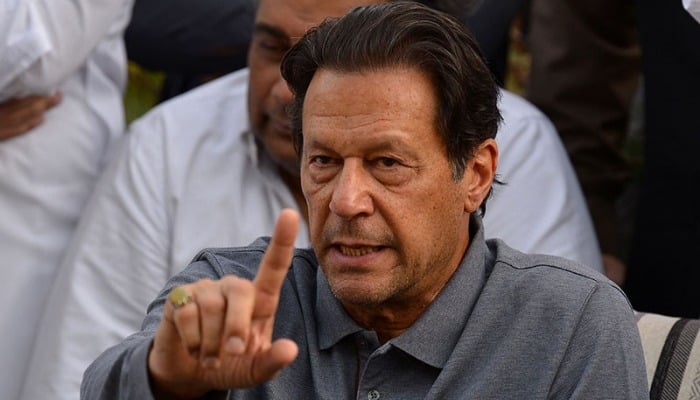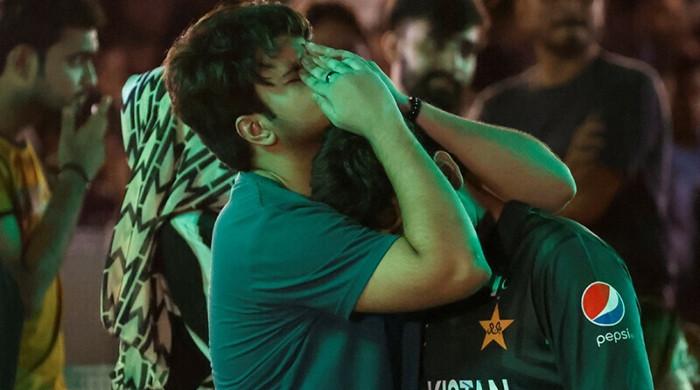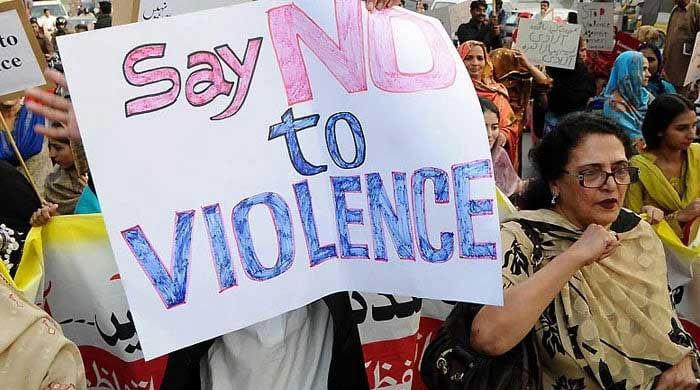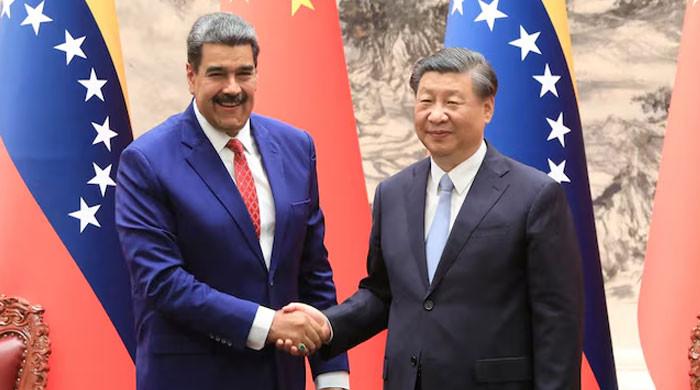Imran Khan’s narrative cannot be countered through facts
Imran Khan has always idealised president Ayub, but this time he has modelled himself on Bhutto archetype, who was punished by US
April 28, 2022

The opposition alliance that outfoxed and outmanoeuvred Imran Khan in the political arena has no clue how the master narrator has weaved the web of his new narrative around them.
As the motion of no-confidence became unstoppable, Khan successfully launched his ghaddari narrative, which sucked, within days, the national media and his political opponents into the discourse — the first and the foremost condition for a narrative to succeed. It is incredible that he did it at a time when his earlier narrative had melted in the heat of reality and its watered-down version was not serving him well as the ‘market’ had no appetite for his tabdeeli and his Naya Pakistan any longer.
As a populist, Imran Khan belongs to the 21st century and communication is his forte. Most of his successes hinge not on his performance, but on his communication. From a shy communicator who would fumble while speaking and struggle to find proper words, he has turned himself into a marvellous political communicator over time.
Imran Khan’s involvement with the discipline of communication goes back to 1992 when he retired from cricket and started building a cancer hospital. Raising funds for a large charity hospital required a team of good communication experts. The team he put together decided to focus on Imran Khan as the brand that could get the required resources. While charity was raised, a part of the money was spent back on Imran Khan’s brand so as to raise more money. This kept him alive in the public imagination as a philanthropist and national hero while his sporting career had ended.
Imran Khan’s understanding of modern corporate branding and a ready team of communication experts helped him when his party started getting traction after the 2008 elections. Some of Imran Khan’s alienated associates state that some international branding companies were also engaged for the purpose. With generous resources and even more generous patronage from some state officials at his command, Imran Khan soon turned the PTI into the first branded political party, fulfilling all the requirements of a modern brand. Imran Khan was able to win ‘brand loyalty’ amongst a generation that had never seen him play cricket.
While people remain focused on the PTI’s army of trolls who have become a national nuisance, Imran Khan’s real achievement lies in the art of framing or building a narrative. His corruption narrative was a catch-all discourse that could be used to explain almost everything that had happened, was happening or could happen in the future. Such narratives are part and parcel of populist politics everywhere and they are helped in no small measure by the fact that the prey cannot even spot the snare, landing on it like an unlucky bird.
Imran Khan’s corruption narrative was built by putting together elements of earlier narratives that have been an act of faith among some socio-economic groups, particularly the powerful salaried class and the urban middle class. These classes do not find a solution to Pakistan’s problems in democracy or reformed institutions. Democracy would mean handing power to the traditional elite and empowering the poor. Reforming institutions would be a challenge to the power of the officer class. The solution for them is replacing the traditional political elite with a strong man from amongst them.
Finally, they found such a hero in Imran Khan whose narrative contained what they already believed in, and he presented the possibility of realising it by portraying himself as the strongman leader who would be the solution to all of Pakistan’s problems by just being incorruptible. It was promised that Pakistan would automatically turn into a developed country after it was redeemed from the corrupt elite and handed to a god-fearing, honest and ghairatmand ruler.
After three and a half years, when he was about to be thrown out of power, Imran Khan had nothing to show for his narrative. A narrative, after all, is a narrative, not a scientific theory of change that could provide a formula for reforms. His Naya Pakistan was a poorer, more corrupt, and dysfunctional version of Old Pakistan. For example, he left Pakistan with a shrunken GDP and during his rule, a common Pakistan became poorer than a common Bangladeshi. The only tabdeeli he could show was in the culture of abuse and blatant violation of freedom of expression, democratic norms, and human rights.
It was indeed the time for rebranding, an occasion to come up with a new narrative, a new story that could give a glorious turn to his humiliating exit from power, provide an excuse for his failures and galvanise his base again for a new assault.
Imran Khan’s new narrative also builds on the hate capital available in society. A common Pakistani has been suspicious of the US due to the patronage the superpower doled out to all military dictators while being harsh to most democratic governments. Due to the weak relationship between state and society, and manipulation of the media, conspiracy theories have been a staple political diet for Pakistanis for a long time. Imran Khan’s new narrative is a conspiracy theory par excellence. It is a David vs Goliath story where the US is the great global villain while Imran Khan is a national hero.
Interestingly, the whole narrative is based on a diplomatic wire sent by Pakistan’s embassy containing the future scenarios about the US-Pakistan relationship drawn by a mid-ranking official of the US State Department. In the PTI’s paraphrasing, Donald Lu, a lowly assistant secretary of state, had told the Pakistani ambassador to go and tell his boss, who was no other than the Makhdoom of Multan, to throw out the great Khan via a no-trust move.
According to this narrative, Lu, in this exchange foretold a no-trust motion against the great Khan. This conspiratorial no-trust motion was supposedly unknown to the world at that time, except for the US and their Pakistani collaborators. Imran Khan’s allies were contacted through some other channel, still unknown to Pakistan’s counterintelligence agencies and they were bought to support the no-confidence motion. This unfortunate ‘intrigue’ against the leader of the Ummah has divided families. While Shujaat Hussain and his son readily accepted US money, Chaudhry Parvez Ilahi and his son stood firm and refused to sell their souls to Uncle Sam. The nafees log from Karachi who had brought Khan to power in 2018 were in desperate need for the greenback this time. Worst of all, legislators from the BAP, who had been a bulwark against traitors in their province, turned into traitors themselves.
Though Imran Khan has always idealised president Ayub, one of the most allied of US allies during the cold war, this time he has modelled himself on the Bhutto archetype, who, in common perception, was punished by the US for defying the superpower on the nuclear programme. And he was hanged, by local Mir Jaffars, according to Khan. Similar Mir Jaffars are after Imran Khan as well. How Imran Khan has defied the US is still unknown to us.
A 21st century populist narrative works like a story told by a schizophrenic. There is no way that it can be countered through facts or critical thinking. The more you counter it, the stronger it becomes. That is a basic principle of framing theory that Imran Khan’s opposition fails to understand and becomes his prey again and again. They may be shrewd politicians, but their communication belongs to the 20th century, and they are bad storytellers.
Fortunately, or unfortunately, Pakistan is not located on Twitter. The urban middle class, for whom identity trumps economy, is only a small section of Pakistani society. The new narrative might have energised Imran Khan’s base and helped him save his party from splintering further, but it may not win him elections if they were held today.
The writer is an anthropologist and development professional. He tweets @zaighamkhan and can be reached on [email protected]
Originally published in The News











